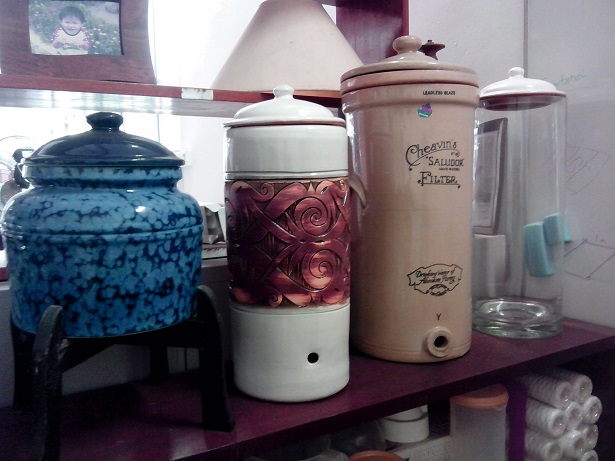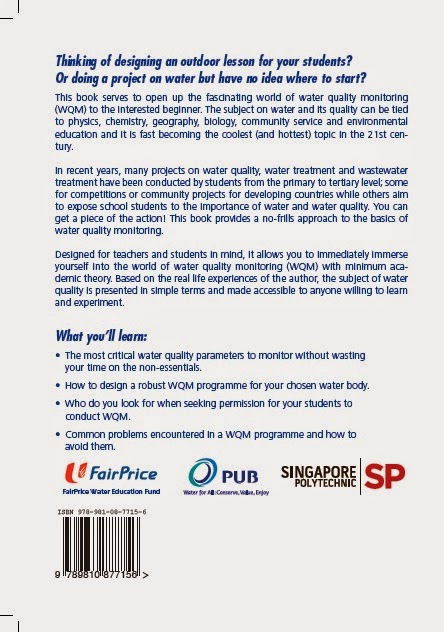It is heartening to see more schools (secondary and pre-U) getting into water quality monitoring (WQM), based on the queries coming in from teaching staff and students. This is especially encouraging given the lack of publicity and media coverage on WQM.
I will truly be happy when I see the same trend in research and innovation funds going into WQM. On the positive side, there is already an observable rise in interest in environmental issues, the most obvious star being climate change with all its implications.
Much money has also been poured into water - not WQM of course but on water and wastewater treatment. In the context of Singapore, this is understandable as water has always been an issue of national security. Wastewater treatment may seem to to be a poor cousin of water supply but it is NOT. Without it, Singapore will likely be infested with filthy waterways and crippled by rampant waterborne diseases. (I suddenly remember this analogous joke about our bottom orifice being the boss among all the other body parts. When it refused to work and shut down (literally), the brain, heart, stomach etc. went into panic and finally acknowledged it as the boss.)
Hopefully, we will start to recognise the role WQM plays in our water supply. Water does not only come from rain dropping into the reservoir directly. It comes from the watershed serving the reservoir. In Singapore's case, the watershed can extend to quite a large area serviced by a network of canals running into the reservoir. Oh well, perhaps one step at a time.
I have copied an excerpt of a recent query below together with my reply. Perhaps some of you may find it useful. (I have of course omitted names of persons and schools in my excerpt.)
-------------------------
We are a group of 3 students from (omitted) currently preparing to embark on a water quality project by assessing the macroinvertebrates in water body. The two main water bodies we are looking at are WELL stream and a canal in Hort Park.
After looking at your blog, we discovered a lot of useful information that can help us with our project. There are a few problems we hope you can clarify for us.
Firstly, we are unsure about the period needed to monitor the macroinvertebrates in order for the results to be accurate.
Also, we are not very sure about the suitable methodology to monitor the macroinvertebrates as we are strongly discouraged to remove macroinvertebrate from the water bodies. Currently we are thinking about scooping the macroinvertebrates out of the water body to observe, before putting them back since the canal and stream are relatively shallow and the kick-seine method is not practical. The problem with this is that the stream may flow too fast for us to count the macroinvertebrates correctly.
We really want a guidesheet and would like to enquire if you have a guidesheet for identifying macroinvertebrates. Due to short dateline, we would only pick on one species to observe, which we would only decide after going to the actual sites.
-----------------------------
Good to see that you are interested in the bugs in our waters.
A few points from me:
What is your objective of assessing the bugs in your chosen water bodies? Do you have a hypothesis to prove or disprove?
Monitoring period
This depends on your answer to point 1.
E.g. if you are trying to find out the effects of day/night on the bug community, then you probably have sample in the morning, afternoon, evening, after midnight.
Or are you trying to correlate some other parameter to the bug community?
Methodology
This will be tricky if you do not want to remove any bugs from the environment. Sorting and counting will be impossible without bringing the bugs out of the water though I believe it is possible to sort/count on site as your suggested (the bugs will still have to be removed from the water environment).
However, the method you suggested (scoping out and putting back) may not work too well if you do not stir up the bottom sediments. Most bugs are found in the sediment.
Being not familiar with the locations you mentioned, I am not sure why you said that the kick seine method is not practical as it can still be used in shallow waters. Other methods include the Surber sampler, colonisation samplers (leaving something in the water for bugs to colonise) and drift sampler. Colonisation sampling and drift sampling do not require kicking and have a good chance of yielding a signicant number of bugs.
I suggest that you restrict yourself to Order level for identification rather than species level as it is difficult to even go to Family level in the field. A good guidesheet is the Aquatic key sold at Nature Niche. It is designed for Thailand's bugs though it should still work well here. Check if they have stock. If not, you may borrow from me.
You are now unsubscribed
-
CLS
We have removed your email address from our list.
We're sorry to see you go.
Was this a mistake? Did you forward one of our emails to a friend, and...
4 years ago

















